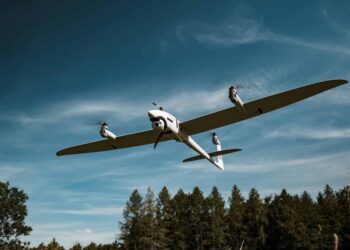Teal Group, WASHINGTON: Unmanned Aerial Vehicles (UAVs) are the most dynamic growth sector of the world aerospace industry, report Teal analysts in their latest integrated market analysis.
Teal Group's 2008 market study estimates that UAV spending will more than double over the next decade from current worldwide UAV expenditures of $3.4 billion annually to $7.3 billion within a decade, totaling close to $55 billion in the next ten years.
“The most significant catalyst to this market has been the enormous growth of interest in UAVs by the US military, tied to the general trend toward information warfare and net-centric systems,” said Teal senior analyst Steve Zaloga, one of the authors of the new study. “UAVs are a key element in the intelligence, surveillance, and reconnaissance (ISR) portion of this revolution, and they are expanding into other missions as well with the advent of hunter-killer UAVs.”
The study suggests that the US will account for 73% of the worldwide RDT&E spending on UAV technology over the next decade, and about 59% of the procurement. These US expenditures represent higher shares of the aerospace market than for worldwide defense spending in general, with the US accounting for about 67% of total worldwide defense RDT&E spending and 37% of procurement spending, according to forecasts in International Defense Briefing, another Teal Group competitive intelligence service.
The fifth edition of the sector study, “World Unmanned Aerial Vehicle Systems, Market Profile and Forecast 2008,” examines the worldwide requirements for UAVs, including UAV payloads, and provides ten-year forecasts by country, region, and classes of UAVs.
The 2008 study also provides 10-year funding and production forecasts for the wide range of UAV payloads including Electro-Optic/Infrared Sensors, Synthetic Aperture Radars (SARs), SIGINT and EW Systems, C4I Systems, and CBRN Sensors.
“The payload portion of the 2008 study includes expanded sensor forecasts, including many new systems and system types,” said Dr. David Rockwell, second author of the new UAV study. The U.S. Air Force has stated ISR is “the centerpiece of our global war on terrorism,” and major RDT&E efforts are bringing large-aircraft capabilities to smaller and smaller UAVs, including mini-SARs and chem/bio sensors.
The 2008 study also includes a UAV Manufacturers Market Overview that reflects the worldwide UAV market “as one of he hottest areas of growth for defense and aerospace companies,” said Philip Finnegan, third author of the new UAV study.
The new UAV study will double the number of companies covered. “The dynamism of the UAV market means that European companies are becoming increasingly important, so we will add Thales, Safran and EMT.”
“Smaller companies can successfully compete against larger players, as AAI Corp., General Atomics and AeroVironment have all shown,” Finnegan said. In addition to continuing coverage of these successful small U.S. companies, new ones have been added, including Insitu, Aurora Flight Sciences, Swift Engineering and Proxy Aviation Systems.
“Our overview tracks the widely varying approaches being taken by these key companies, ranging from outright acquisitions, to teaming arrangements and internal development of new UAV systems,” said Finnegan.
“Teal Group already covers the UAV market in its World Missiles and UAV Briefing, which examines the UAV market on a program-by-program basis,” said Zaloga. “The sector study examines the UAV market from a complementary perspective, namely national requirements, and includes both a comprehensive analysis of UAV system payloads and key UAV manufacturers.”
The Teal Group is an aerospace and defense market analysis firm based in Fairfax, Virginia USA. It provides competitive intelligence to industry and government worldwide.
Germany says adding explosive drones to weapons arsenal
Germany said Friday it would buy explosive drones for the first time as Berlin boosts investments in its armed forces...









